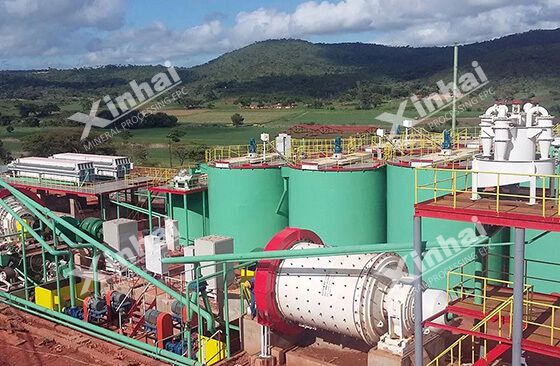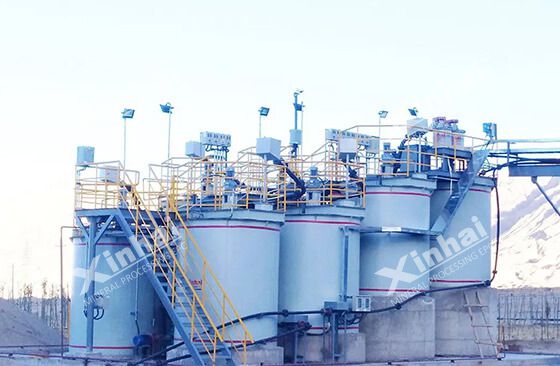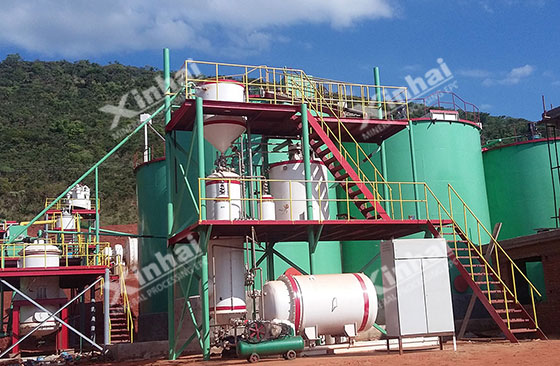Gold Processing | 4 Cyanide Gold Extraction Process
2022-08-06 Xinhai (2782)
2022-08-06 Xinhai (2782)
If you have any questions, please contact us through the following ways, we will give you more and better assistance!

Gold is a metal discovered and utilized by human beings earlier. Since ancient times, the pursuit of gold by human has never declined.
But in fact, there is very little pure natural gold in nature, and almost all gold ore must be processed before it can be used.
However, the easy-to-handle gold ore is gradually exhausted, which requires the perfect development of gold selection technology.
Nowadays, the main beneficiation method for refractory gold ore is cyanidation gold extraction. Several common cyanidation gold extraction processes include CIP(Carbon In Pulp), CIL(Carbon In Leach), heap leaching, and pool leaching.
The CIP process is to add gold extraction agent to carry out cyanidation leaching after the ore is crushed and ground into slurry with suitable concentration. After the cyanidation process, the dissolved gold is adsorbed by activated carbon, and then the gold-loaded carbon is treated to extract gold.
The CIP process is suitable for the treatment of ore with a deep oxidation degree and no copper, tin and carbonaceous substances, and the recovery rate can reach more than 90%.
This process has the advantages of simple operation and small loss of activated carbon, but it occupies a large area and has high infrastructure costs.

The CIL process is developed on the basis of the CIP process. The main difference is that the CIL process combines the leaching and adsorption processes of the CIP process.
In the CIL process, activated carbon is added shortly after cyanidation leaching, and the leaching and adsorption are carried out simultaneously. After the adsorption of gold-loaded carbon is completed, it enters the desorption electrolysis system for processing.
The CIL process is suitable for gold mines with low sulfur and silver content and high mud content, and the recovery rate can also reach more than 90%.
Compared with the CIP process, the CIL process has a small footprint and less capital investment, but the activated carbon loss is large.

The heap leaching process is to crush low-grade gold ore to a certain particle size, accumulate it on a leak-proof bottom pad made of asphalt or concrete and other materials, and spray an alkali metal solution on the ore heap to dissolve the gold. The gold-bearing pregnant solution is percolated and collected from the ore heap, and then is deposited and extracted.
Heap leaching can process low-grade gold and silver ores and tailings with a recovery rate of about 65-80%.
The heap leaching method has a simple process, convenient operation and low cost, but it occupies a large area, has a slow speed and a long time, and has certain requirements for the ore of heap leaching.

The pool leaching process is to crush the gold-bearing ore to a certain particle size and put it into a leaching pool containing an alkaline cyanide solution for immersion. After the gold is dissolved into the solution, the gold-containing solution is collected from the bottom of the pool for processing to extract gold.
The pool leaching method is also suitable for processing low-grade ores, but requires a lower clay content in the ore. The recovery rate is 50-70%.
The operation of the pool leaching method is simpler and requires less personnel management, but the leaching time is long and the initial capital investment is large.
The four cyanide gold extraction processes have their own advantages and disadvantages.
In practical application, it is necessary to choose according to the nature of the ore and the actual situation of the concentrator, so as to obtain the maximum economic and environmental benefits.